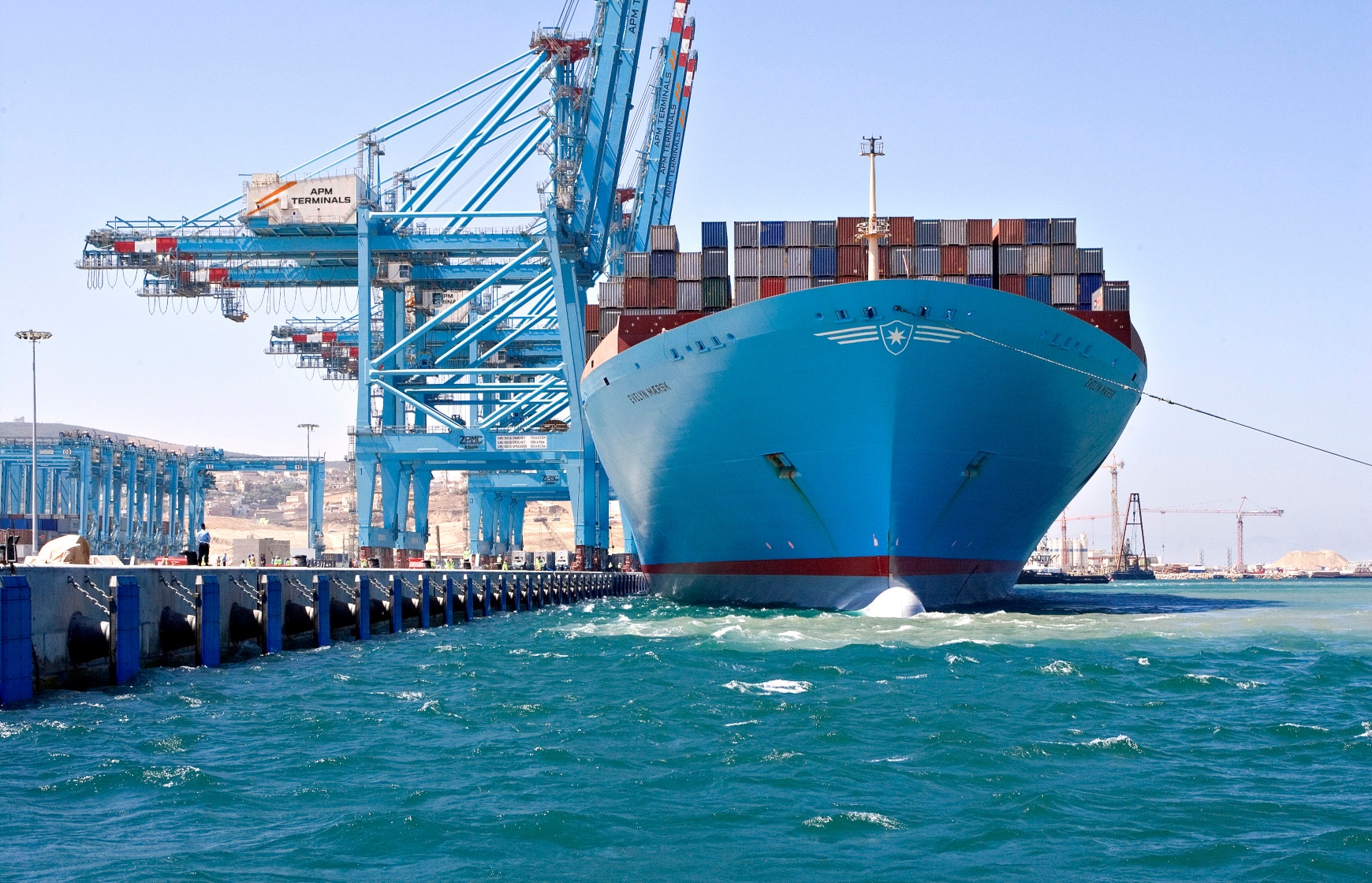
30/05/24
APM Terminals hubs to help Gemini Cooperation achieve 90%+ schedule reliability
Eight of APM Terminals’ fully owned or controlled terminals have been selected as hubs by the new Gemini Cooperation, a long-term operational collaboration between Maersk and Hapag-Lloyd, which will start in February 2025. Hubs will play a key role in delivering the industry-leading 90%+ schedule reliability, competitive transit times, and far-reaching global coverage promised by Gemini.
The selected hubs, which will help connect the new network’s 58 services and more than 6,000 port-to-port combinations, include APM Terminals Maasvlakte II in Rotterdam the Netherlands, North Sea Terminal Bremerhaven in Germany, APM Terminals Algeciras in Spain, APM Terminals Tangier and Medport Tangier in Morocco, Suez Canal Container Terminal in Port Said Egypt, Port of Salalah in Oman, and Port of Tanjung Pelepas in Malaysia.
The role of hubs
To boost reliability and absorb unexpected disruption, the network will consist of mainline services between hubs, supported by dedicated shuttle services running between hubs and regional ports.
Transshipments are sometimes perceived as an inconvenience. However, reliable transshipments can facilitate the smooth movement of goods and be part of an effective logistics operation. Through investment in infrastructure and ongoing implementation of Lean methodologies, APM Terminals has succeeded in cutting average port stay times by 15-20% over the past two years and will continue to work to achieve further reductions.
“APM Terminals is pleased to serve the Gemini Cooperation with a substantial part of our terminal portfolio,” commented Lars Mikael Jensen, Head of Hubs and Collaboration, APM Terminals. “We excel in high productivity and reliability. This has earned us a position at the forefront of our industry and instills confidence in our ability to support Maersk and Hapag-Lloyd in delivering on their ambitions.”
The APM Terminals facilities that will serve as hubs for the Gemini Cooperation have demonstrated world-leading operational performance in Drewry’s annual review of terminal operators. To meet the needs of the new network and ensure that capacity remains for other shipping lines, APM Terminals is investing to increase capacity at these hubs by 30%.
Lean methodologies
Over many years, the company has implemented a complete toolkit of Lean methodologies to document, review and standardize thousands of processes at its terminals to help shave precious minutes off each operation. In turn this has helped free up capacity without the need for investment in new equipment and facilities.
“This investment we’ve made in training our employees in Lean methodologies over the last five years, is our true competitive advantage,” explains Birna Osk, Chief Commercial Officer at APM Terminals.
“Investment in new equipment is easy to copy, but our people are trained to identify and eliminate examples of waste every time they complete a task. This provides thousands of potential improvements each day. For more complex procedures, we’ll run a Kaizen – a deep dive involving a broad range of employees – to map a process and identify areas for improvement. And we also work closely in collaboration with both landside and shipping line customers to identify improvements that lift standards of efficiency. I believe this is unique in our industry.”
Leveraging advanced technology
Advanced technology - such as the Internet of Thing (IoT) and digital twins – is also being used to lift standards of reliability and efficiency.
For example, APM Terminals has installed thousands of IoT sensors on equipment over recent years. This allows for its physical assets’ performance to be visualised and monitored in real time. Operational exceptions can be detected as they occur and standardised tools and processes used to respond quickly, preventing any significant disruptions and boosting reliability and productivity.
Four of the APM Terminals hubs to be used by Gemini Cooperation already use digital twin modelling: Tangier (TC1), Port of Salalah, Algeciras, and Suez Canal Container Container Terminal.
A digital twin is essentially a digital representation of an asset, which can be an object, process, or system. It uses real-time data, historical data, and machine learning to mirror the real-world version’s functionality and status and predict future states. Digital twins have huge potential to help design, visualise, monitor, optimise, and maintain terminals more effectively. For example, digital twins allow APM Terminals to forecast and fix potential performance problems such as congestion and optimise the allocation of its equipment and resources.
This technology is being rolled out to all other Gemini Hubs in time for the network’s implementation.
APM Terminals also uses digital tools for berth planning and yard optimisation. This means it can improve service delivery reliability by testing different processes and layouts, choosing the most effective one.
The hubs are just one part of the planning for Gemini’s network of the future. Maersk and Hapag-Lloyd are currently testing and fine tuning the network design, schedule reliability, and all the other network dependencies to be ready for the February implementation.